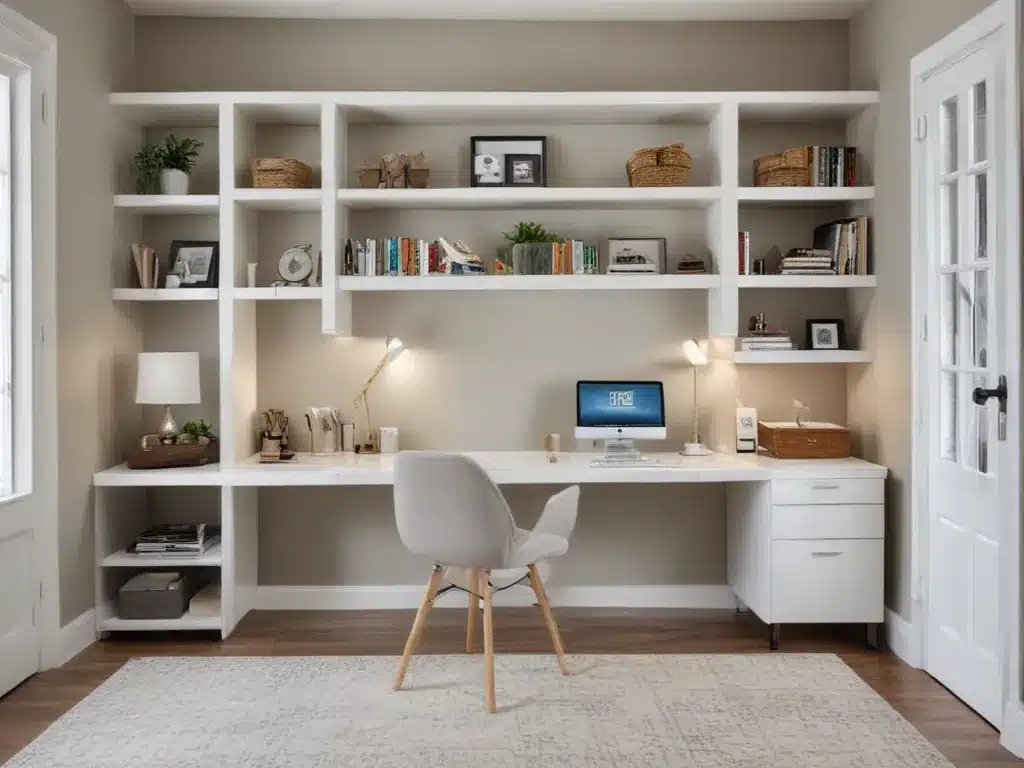
The Rise of Remote Work
The COVID-19 pandemic has – transformed – the way we work, accelerating the shift towards remote work. With many companies – adopting – a hybrid or fully remote model, the need for a dedicated home office space has become increasingly important. An unused room, a corner of the living room, or even a closet can – be converted – into a functional and inviting workspace.
Planning Your Home Office
Before – diving into – the transformation process, it’s essential to assess the available space and determine your specific needs. Consider the following questions:
- What is – the size of – the unused space?
- How much natural light does – the area receive?
- What type of work will – you be doing?
- Will – you need – a quiet environment or space for video conferences?
By answering these questions, you can – plan – the layout, furniture, and necessary equipment for your home office.
Designating a Dedicated Space
The first step in – transforming – an unused space into a home office is to designate a specific area solely for work. This separation can – help – create a mental boundary between your professional and personal life, promoting better work-life balance.
If you’re – converting – a spare room, consider painting the walls in a calming yet energizing colour, such as a soft blue or sage green. These hues can – promote – focus and productivity while creating a serene atmosphere.
Organizing Your Workspace
Once you’ve – designated – the area, it’s time to organize your workspace. Start by – decluttering – the space and removing any unnecessary items. A clean and organized environment can – improve – focus and creativity.
Next, – consider – your storage needs. Invest in shelves, filing cabinets, or storage bins to keep your workspace tidy and organized. Label everything clearly, making it easier to – find – what you need when you need it.
Choosing the Right Furniture
The furniture you – choose – for your home office can greatly impact your productivity and comfort. A sturdy desk that fits the space and accommodates your computer, documents, and other essentials is a must-have.
Additionally, – invest – in an ergonomic chair that supports your back and promotes proper posture. Prolonged sitting in an uncomfortable chair can – lead – to back pain and other health issues.
Lighting and Ambiance
Proper lighting is – crucial – for a productive and comfortable workspace. Natural light can – boost – your mood and energy levels, so position your desk near a window if possible.
If natural light is – limited – in your home office space, consider investing in task lighting, such as a desk lamp or floor lamp. Avoid harsh overhead lighting, which can – cause – eye strain and fatigue.
To – create – a cosy and inviting ambience, incorporate some personal touches, such as plants, artwork, or inspirational quotes. These elements can – add – warmth and character to your workspace.
Noise Reduction and Privacy
Depending on the location of – your home office, noise and privacy may be a concern. If you live with others or have thin walls, consider soundproofing measures, such as installing acoustic panels or using a white noise machine.
If – privacy is – an issue, hang curtains or invest in a room divider to create a physical barrier between your workspace and the rest of the living area.
Incorporating Technology
In today’s digital age, – incorporating – the right technology into your home office is essential. Ensure you have a reliable and fast internet connection, as well as the necessary hardware and software for your work.
Consider – investing – in a quality webcam and microphone if you frequently participate in video conferences or online meetings. These tools can – enhance – your virtual communication and professionalism.
Taking Breaks and Self-Care
While a dedicated home office space can – improve – productivity, it’s essential to take regular breaks and prioritize self-care. Incorporate stretching exercises or short walks into your daily routine to – avoid – prolonged sedentary periods.
Additionally, – make time – for hobbies and activities outside of work to maintain a healthy work-life balance. A well-rounded lifestyle can – contribute – to overall well-being and improved job performance.
Final Thoughts
Transforming an – unused space – into a functional and inviting home office requires careful planning and attention to detail. By following these steps, you can create a workspace that promotes productivity, comfort, and a healthy work-life balance.
Remember, – your home office – is an extension of your professional life, so invest the time and resources to make it a space that inspires and motivates you to achieve your goals.
















